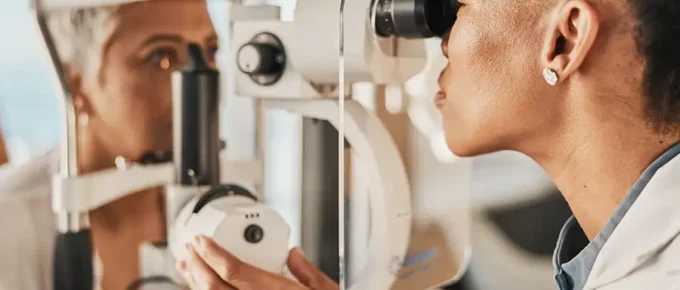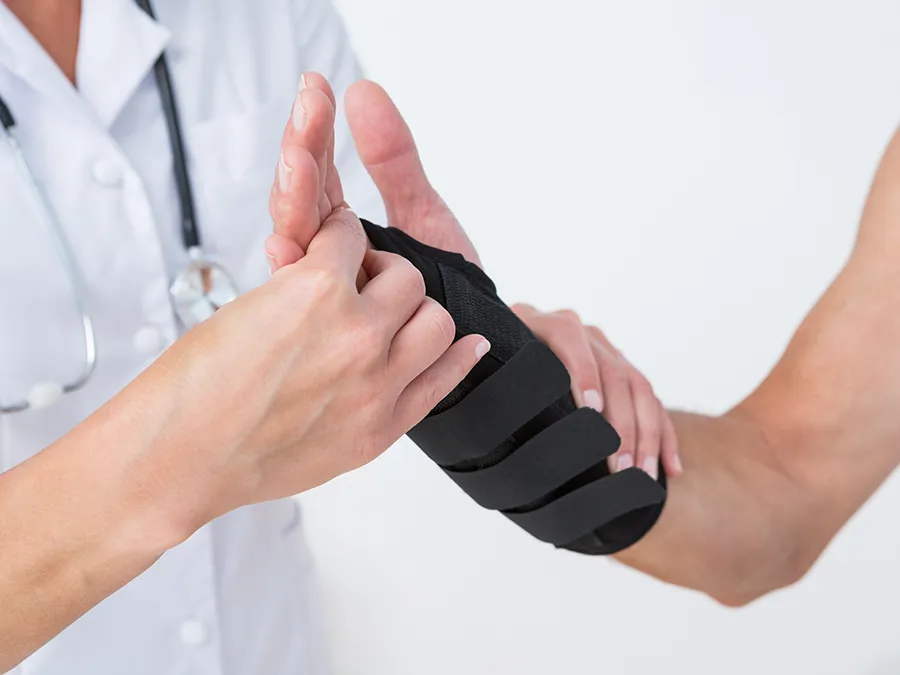
Learn about your rights after an eye injury accident in Miami.
Miami, a city known for its pristine beaches and vibrant nightlife, is not immune to the unfortunate reality of accidents. While many people commonly associate accidents with injuries like broken bones or spinal cord injuries, there’s another lesser-acknowledged yet equally significant concern: eye injuries.
Eye injuries, whether caused by a vehicle accident, a dog bite, or even a defective product, can lead to long-term vision problems and, in severe cases, permanent loss of sight. At Redondo Law, we’ve seen firsthand how these types of injuries can profoundly impact lives.
Navigating the legal landscape in the wake of such injuries requires not only a deep understanding of the law but also a compassionate approach that recognizes the unique challenges faced by those suffering from eye-related traumas.
If you’ve recently suffered a serious eye injury after an accident caused by another person’s negligence, reach out to Miami accident attorney Mike Redondo at Redondo Law. He’ll guide you through this difficult time with expertise and empathy, ensuring you receive the care and compensation you deserve.
Did you know?
According to a study published in the National Library of Medicine, drivers of motor vehicles account for about 62% of eye injuries requiring emergency room treatment after a crash, with contusions and abrasions being the most common injuries.
The risk of eye injuries and vision problems from car accidents
Car accidents can lead to a variety of eye-related injuries and vision problems, often resulting from both direct and indirect trauma. These injuries can be immediately apparent or surface hours or days after the accident.
Some of the most common eye injuries and vision problems seen after a car accident include:
- Direct eye injuries from shattered glass. During a collision, windows or windshields can shatter, sending glass shards flying. These can cause lacerations or penetrate the eye, leading to serious injuries.
- Vision problems from head trauma. When the head is violently jolted during a crash, it can cause the brain to collide with the skull. This head trauma can result in a concussion, which often leads to vision issues such as double vision, blurry vision and difficulty focusing. These problems might not appear immediately and can develop gradually over time.
- Binocular vision disorder (BVD). This disorder occurs when the nerves and muscles responsible for coordinating eye movements are damaged, often due to head injuries in accidents. It can result in symptoms like eye fatigue, headaches and double vision.
- Retinal detachment. The abrupt and forceful movement of the head during a car crash can cause the retina to detach from its normal position at the back of the eye, a condition that can lead to permanent vision loss (blindness) if not treated promptly.
- Strabismus and amblyopia. These conditions, involving crossed eyes or a lazy eye, can arise from physical damage inflicted on the eyes or brain during the accident. The impact can lead to the eyes being misaligned or one eye becoming weaker than the other.
- Whiplash-related vision problems. Whiplash, a common neck injury in car accidents, can indirectly affect vision. The strain on neck muscles can impact the ocular system, leading to a range of vision disturbances.
Given the range of ways in which eye injuries can occur during car accidents, it’s crucial for vehicle occupants to wear seat belts, ensure airbag functionality, and secure loose items in the car to mitigate these risks as much as possible.
A guide to the hidden costs of Florida car accidents
Get maximum compensation for your car accident claim by understanding these hidden costs.
Other common accidents that lead to eye injuries
In addition to car accidents, other common accidents that frequently lead to eye injuries include:
- Motorcycle accidents. The exposed position of motorcyclists makes them vulnerable to flying debris or gravel, which can cause eye injuries if they’re not wearing protective eyewear.
- Boating/fishing accidents. Activities on the water, like boating or fishing, can lead to eye injuries due to equipment like hooks and lines or from debris or spray.
- Slip-and-fall accidents. Falling or tripping can result in the eyes hitting against objects, leading to injury.
- Medical or surgical errors. Accidental eye injuries can occur during medical or surgical procedures.
- Defective products. Malfunctioning or improperly labeled products can cause eye injuries, such as toys with projectile parts.
- Dog bites. Dogs, particularly in aggressive encounters, can cause eye injuries either directly through biting or by knocking someone over, leading to further trauma.
- Scald burns. Hot liquids or steam from defective products or from accidents in restaurants or hotels can scald the eyes.
- Chemical burns. Exposure to household chemicals or a chemical spill in an accident with a commercial truck can cause burns or irritation to the eyes.
- Explosions or fires. Exposure to intense heat, light or blast forces during vehicle crashes or accidents on commercial or private property can cause immediate and severe eye damage.
- Assaults or violent incidents. Physical altercations can lead to direct trauma to the eye area.
- Sports injuries. Engaging in sports without proper eye protection can result in injuries from equipment like balls, rackets or direct human contact.
In these scenarios, the eyes are at risk of a range of injuries, from minor irritations to severe impairments, potentially leading to partial or complete loss of vision. Legal claims for eye injuries typically center around proving negligence in ensuring safety or preventing hazardous conditions.
What is considered a serious eye injury?
Recognizing the red flags of a serious eye injury is crucial for timely medical intervention. Some key warning signs include:
- Pain, especially if it’s persistent, severe or gets worse over time
- Any sudden changes in vision, such as blurriness, double vision, seeing floaters or flashes of light, or partial or complete vision loss
- Visible injuries to the eye or eyelid, such as cuts, puncture wounds or lacerations
- One eye not moving in sync with the other, which could indicate muscle or nerve damage
- Differences in pupil size between the two eyes or irregular pupil shapes
- The presence of blood in the sclera (the white part of the eye)
- Increased sensitivity or pain when exposed to light
- Unusual eye discharge
- Swelling around the eye or eyelid or bruising (like a black eye), especially without any known cause
- The feeling of something in the eye that won’t come out
- Irregularities in the eye’s surface
- Nausea or vomiting following a head injury, which can sometimes indicate a more severe eye or brain injury
Prompt medical attention is essential if any of these symptoms are present, as they could signify a serious eye injury that, without treatment, could lead to vision loss or other long-term complications.
What is considered a minor eye injury?
A minor eye injury generally refers to those that are less severe and typically do not lead to long-term damage to the eye.
Examples of such injuries include:
- Superficial scratches or abrasions on the cornea, commonly known as corneal abrasions. These can be uncomfortable but usually heal on their own within a few days under proper care.
- Subconjunctival hemorrhage, which is characterized by a small amount of bleeding under the conjunctiva, presenting as a bright red patch on the white of the eye. Although it may appear concerning, it’s usually harmless and resolves without intervention.
- Small foreign objects like dust or sand getting into the eye. While these can cause irritation, they usually don’t result in permanent eye damage and can often be rinsed out.
- Minor contusions or bruising around the eye, often referred to as a “black eye.” These can occur from impacts but usually don’t pose a serious threat to eye health if they are mild.
Regardless of whether you believe your eye injury is minor or not, it’s always best to seek a diagnosis and treatment from a medical professional as soon as possible, especially if you plan to seek a legal remedy after an accident.
Your guide to Miami acute injury accidents & lawsuits
Understand your right to compensation after suffering an acute injury in Miami.
How long does an eye injury take to heal?
The healing time for an eye injury can vary significantly depending on the type and severity of the injury. Below are some general guidelines:
- Corneal abrasions (scratches on the eye). Minor corneal abrasions typically heal within 24 to 48 hours. More severe scratches may take up to a week to heal.
- Subconjunctival hemorrhage (blood on the white of the eye). These generally clear up within 2 weeks without the need for treatment.
- Chemical burns. Recovery depends on the type and severity of the chemical involved. Mild irritants might resolve in a few days, while strong acids or alkalis can cause more severe damage that requires a longer healing period or may even be permanent.
- Foreign objects in the eye. If the object didn’t scratch the eye, symptoms usually improve shortly after it’s removed. If the eye is scratched, it might take a few days to heal.
- Black eye (bruising around the eye). Most black eyes are minor and heal within 1 to 2 weeks.
- Retinal injuries. These can take a variable amount of time to heal, depending on the nature and extent of the injury. Retinal injuries may require lengthy treatment and recovery periods, and some, like retinal detachment, can lead to blindness without emergency medical intervention.
- Eye surgery recovery. This varies widely depending on the type of surgery. Some procedures might have a recovery time of a few days, while others could take several weeks to months.
It’s crucial to follow a health care provider’s instructions and attend all follow-up appointments to ensure proper healing of an eye injury. If symptoms persist or worsen, it’s crucial to seek medical attention promptly.
Can I claim for an eye injury?
Yes, you can file a claim for an eye injury after an accident in Miami, but the success of your claim will depend on several factors, including proving fault and understanding how Florida’s modified comparative negligence system applies to your case.
To have a successful personal injury claim, you must be able to demonstrate that another party’s negligence or wrongful action caused your injury. This involves establishing that the party owed you a duty of care and breached that duty, and you suffered an eye injury as a result of that breach.
Additionally, in Florida, the system of modified comparative negligence will affect how much compensation you can receive. Under this system, compensation for economic and non-economic damages is adjusted based on the degree of fault of each party involved. This means that if you’re found to be partially at fault for the incident that led to your eye injury, your compensation will be reduced by your percentage of fault.
Here’s an example:
Suppose you were in an accident with a car while riding a motorcycle that resulted in you suffering an eye injury. The other driver was speeding when they hit you, but you weren’t wearing any eye protection at the time of the accident.
If a court finds you 30% responsible for your injury because you didn’t take the necessary protective measures and the other driver 70% at fault for speeding, your compensation would be reduced by your percentage of fault (30%). So, if your total damages amount to $100,000, you would only receive $70,000.
It’s important to note that in Florida, if you’re found to be more than 50% at fault for the accident, you won’t be able to recover any damages. This emphasizes the importance of gathering strong evidence and having effective legal representation to minimize your fault and maximize your potential compensation.
How long do I have to file a lawsuit after an eye injury in Florida?
In Florida, the statute of limitations for most personal injury claims, including those involving eye injuries, is 2 years. This means you generally have 2 years from the date of the injury to file a lawsuit.
It’s important to be aware of this deadline because if you attempt to file a claim after this period has expired, your case will likely be dismissed.
Suffering from an eye injury after an accident in Florida? Get help from an experienced Miami accident attorney.
If you’ve suffered an eye injury because of someone else’s negligence, don’t wait to seek the expert legal assistance you deserve. Skilled Miami accident attorney Mike Redondo can help you prove liability and ensure your rights are protected.
With the unique experience of having represented insurance companies early in his career, Mike Redondo has an insider’s understanding of how these companies work to limit liability in personal injury cases. Now, he applies this knowledge to advocate for accident victims like you, striving to maximize your settlement awards and judgments.
Don’t let the opportunity for rightful compensation slip away. Reach out to Mike at Redondo Law to enlist a partner who knows both sides of the legal battle and is committed to securing the best outcome for your case.
Get started by filling out the form below to schedule your free consultation.
References
Armstrong, G., Chen, A., Linakis, J., Mello, M., & Greenberg, P. (2014). Motor Vehicle Crash-Associated Eye Injuries Presenting to U.S. Emergency Departments. Western Journal of Emergency Medicine, 15(6), 693–700. https://doi.org/10.5811/westjem.2014.5.20623



